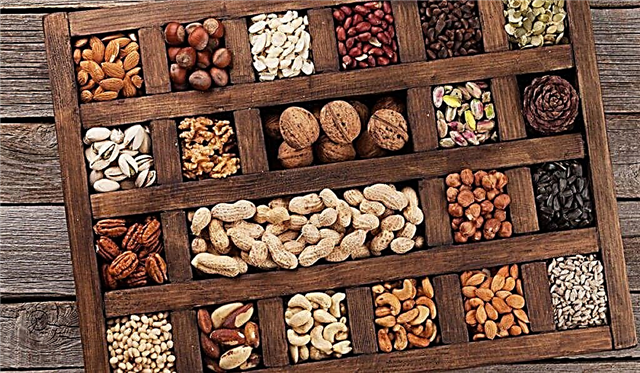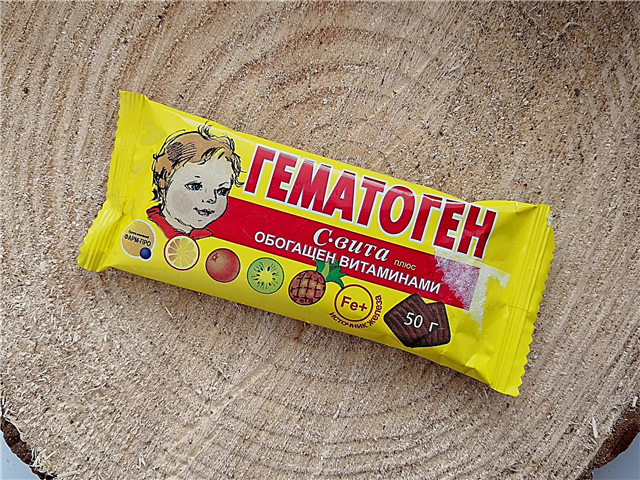What is the use of nuts in the diet of a nursing mother?
An allergic reaction to this product is a contraindication for its use by a nursing woman.
Walnuts are rich in vitamins, minerals and trace elements. It helps to calm down the nervous system of the baby during breastfeeding and improve sleep. On a nursing woman, he has the following effect: reduces fatigue, improves memory, concentration and normalizes sleep.
It is saturated:
- beta carotene;
- vitamins A, E, B, C, PP, K, H and others;
- trace elements (iron, cobalt, magnesium, calcium, potassium, etc.);
- essential amino acids;
- proteins, fats (they make up 90%);
- fiber (it improves intestinal peristalsis);
- tannins (they give the kernels a tart taste);
- essential oils (they contain 0.03%).
It is these oils that contribute to the development of allergic reactions in a number of babies. Therefore, if there is an allergic reaction to this product, a nursing woman is not recommended to use it.
This fruit also has: bactericidal, wound healing, immunostimulating, anti-inflammatory effects.
Does the country of origin matter?
Walnut has more than twenty varieties. In Russia, the most popular are "Ideal" and "Giant".
An important fact is that its chemical composition is influenced by: environmental factors, climate and weather conditions. So, for example, the percentage of fat content is determined higher in the western zones of its distribution, eastern and southeastern.
The country in which it was grown is of great importance, since the composition, content of proteins, fats and carbohydrates will differ.
For example, the fat content of nuts grown in Ukraine is about 69%, in Turkey - 67%, in France - 56 - 60%, Kyrgyzstan - 73%, Moldova - 62%.
The kernels of nuts grown in France contain more water, fiber, less nitrogenous protein substances than Kyrgyz ones.
To whom and in what quantity are walnuts allowed?
A nursing woman, in the absence of contraindications, is allowed to use them, but in limited quantities. You can eat no more than 5 - 7 pieces per day.
Eaten several pieces of kernels of this nut by children under one year old can cause serious harm to the baby, due to the structural features of the pancreas at this age.

People of almost all ages are allowed to eat them. They are especially useful:
- during pregnancy;
- breastfeeding (for mom and baby);
- when planning a pregnancy;
- in preschool, school, puberty.
Its use for children is recommended no earlier than from two to three years of age (in limited quantities), no more than 4-5 pieces per day.
Contraindications to the use of walnuts during lactation
During breastfeeding, they are prohibited if you have:
- mom's allergic reaction to nuts.
When breastfeeding, walnuts can be not only beneficial, but also harmful (if you have allergies).
- diseases of the gastrointestinal tract in acute form;
- skin diseases (psoriasis, neurodermatitis, etc.).
How to choose the right walnuts and how to store them?
The tips for choosing them are as follows.
- It is better to buy unpeeled and large nuts. When choosing them, be sure to pay attention to the shell (it should not be cracked, have black spots and damage).
If the volume that the kernel takes up is more than 50 percent, that's a good nut.
- They must be dry (moisture will cause them to rot).
- When tapping them against each other, a sonorous knock should be heard (a dull one is a sign of a damaged core).
- The shell should be light brown and free of deposits.
- Heavier nuts are recommended as the kernel may be dry.
- When choosing peeled kernels, their surface should not be oily (if it is, it was stored for a long time and incorrectly). It should have a golden hue.
- When shaking them in the shell, no knocks should be heard (their presence indicates a dried core).
- When purchasing it in packaging, you must pay attention to the packaging itself, the presence of defects on it, and the expiration date.

Packaging should not be transparent. Special "windows" should be left on it to assess the quality of the product.
It is recommended to store them unpeeled for one year and peeled for one to two weeks, at room temperature, and in case of freezing - one year.
It is better to store peeled kernels in the refrigerator in a glass or metal container. The most favorable temperature for this is from +10 to - 5 ° C, and humidity is up to 60%. Direct sunlight is not recommended, therefore, if they are in the shell, it is recommended to put it in a box or net and store in a cool dark place.
Every one or two months, they must be examined for the presence of mold on the shell, if any, moldy nuts are thrown away.
Several recipes with walnuts
It is not recommended for nursing mothers to eat nuts until the baby is three months old.
Unusual mashed potatoes
Composition:
- 1 onion;
- 750 g potatoes;
- 25 g butter;
- 80 g of walnut kernels;
- 75 g cream;
- salt to taste.
Preparation:
- fry the onion cut into thin rings in a pan in butter (15 grams) until golden brown;
- chop nuts with a blender;
- boil peeled potatoes in salted water;
- drain the liquid by ¼ part;
- crush the potatoes, then stir in the remaining butter, warm cream, fried onions and walnuts;
- salt if necessary.
Delicious salad with nuts

Composition:
- meat - 200 g;
- kernels of nuts - 8-10 pieces;
- beets - 1 pc.;
- cheese - 30 g;
- egg - 1 pc.;
- sour cream - 50 g;
- salt to taste.
Cooking method:
- Boil beets, meat, egg until tender.
- Refrigerate, peel and cut all of these ingredients, including cheese, into cubes;
- Grind the nuts in a blender;
- Mix all the ingredients, season with sour cream and salt to taste.
Interesting facts about nuts
- They are believed to improve the quality of milk by making it more fatty and nutritious.
- Walnuts got this name because they originated from Asia, and it was the Greeks who began to import them into Russia.
- Their kernels can replace meat for vegetarians, since they contain a large amount of protein.
- The five kernels of this nut contain the daily dosage of vitamin C.
- Peanuts are considered by many to be a nut, but this is not true, since it belongs to the legume family.
- Avicenna also described the healing properties of pine nuts.
- Coconut is the largest nut.
- Nuts are classified as antidepressant products.
Other nuts during lactation
Pine nuts during breastfeeding are considered the safest for a baby, because less often than others they contribute to the development of an allergic reaction in a baby. They calm the baby, normalize sleep and appetite, eliminate the underweight in premature and low birth weight babies. But with their abuse, allergic reactions, colic and bloating can occur.
Breastfeeding hazelnuts and peanuts are the strongest allergens. The most formidable manifestation of their use is anaphylactic shock. In addition, peanuts can cause severe intoxication (as they often contain pathological fungi).

Conclusion
When breastfeeding, nuts have a lot of beneficial properties for both mother and child. However, they must be used with caution. Before including them in her diet, the mother must be sure that there are no contraindications and the quality of the product.
You should not use those kernels of which you doubt the quality! Don't eat a lot of them at once! You need to start introducing them into the diet with one thing, gradually increasing the number! It is enough to eat up to seven cores per day! Do not overuse nuts and then you will only benefit from them! Take care of yourself and your kids! Eat right! Be healthy!
Article rating:



